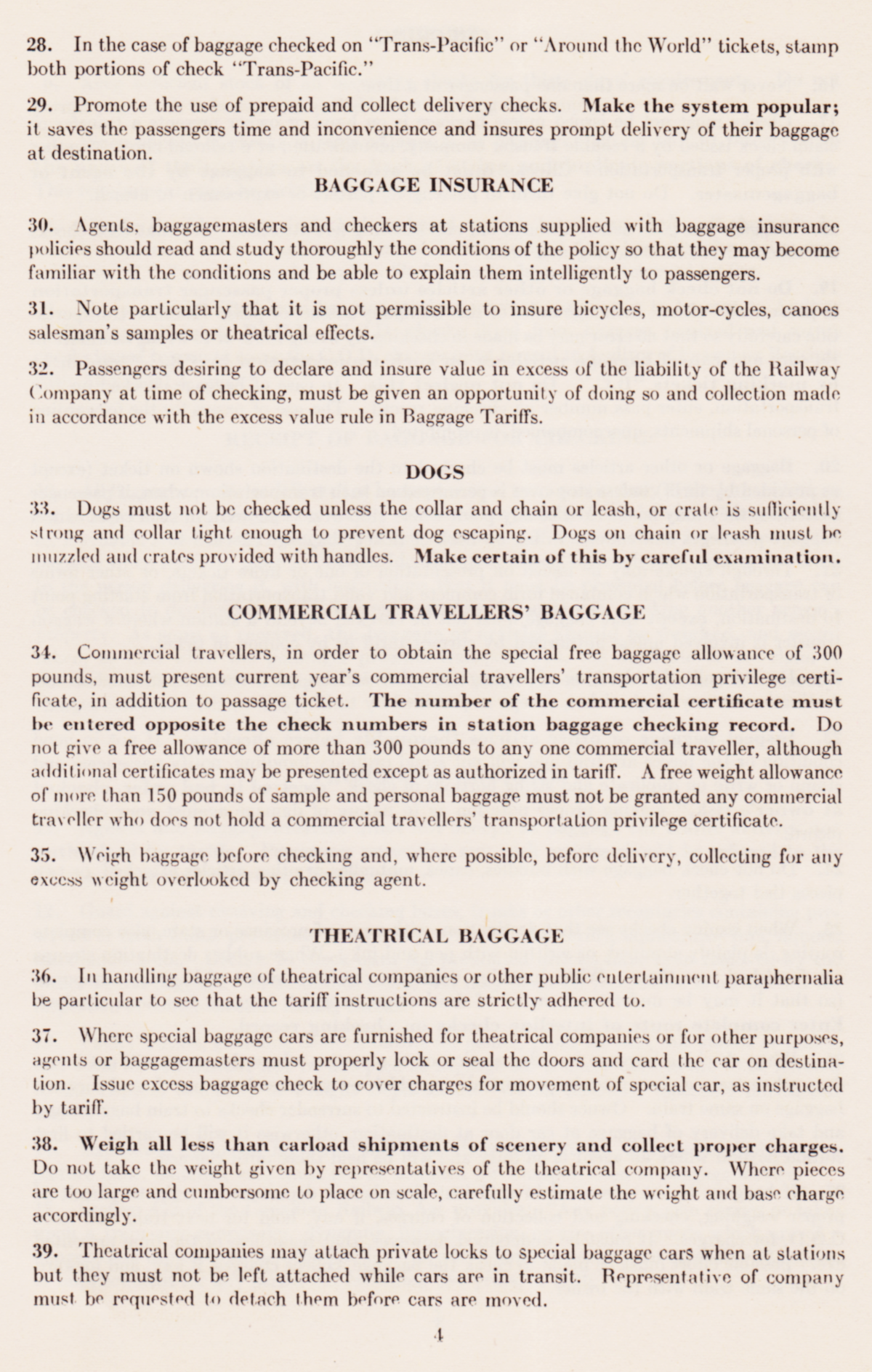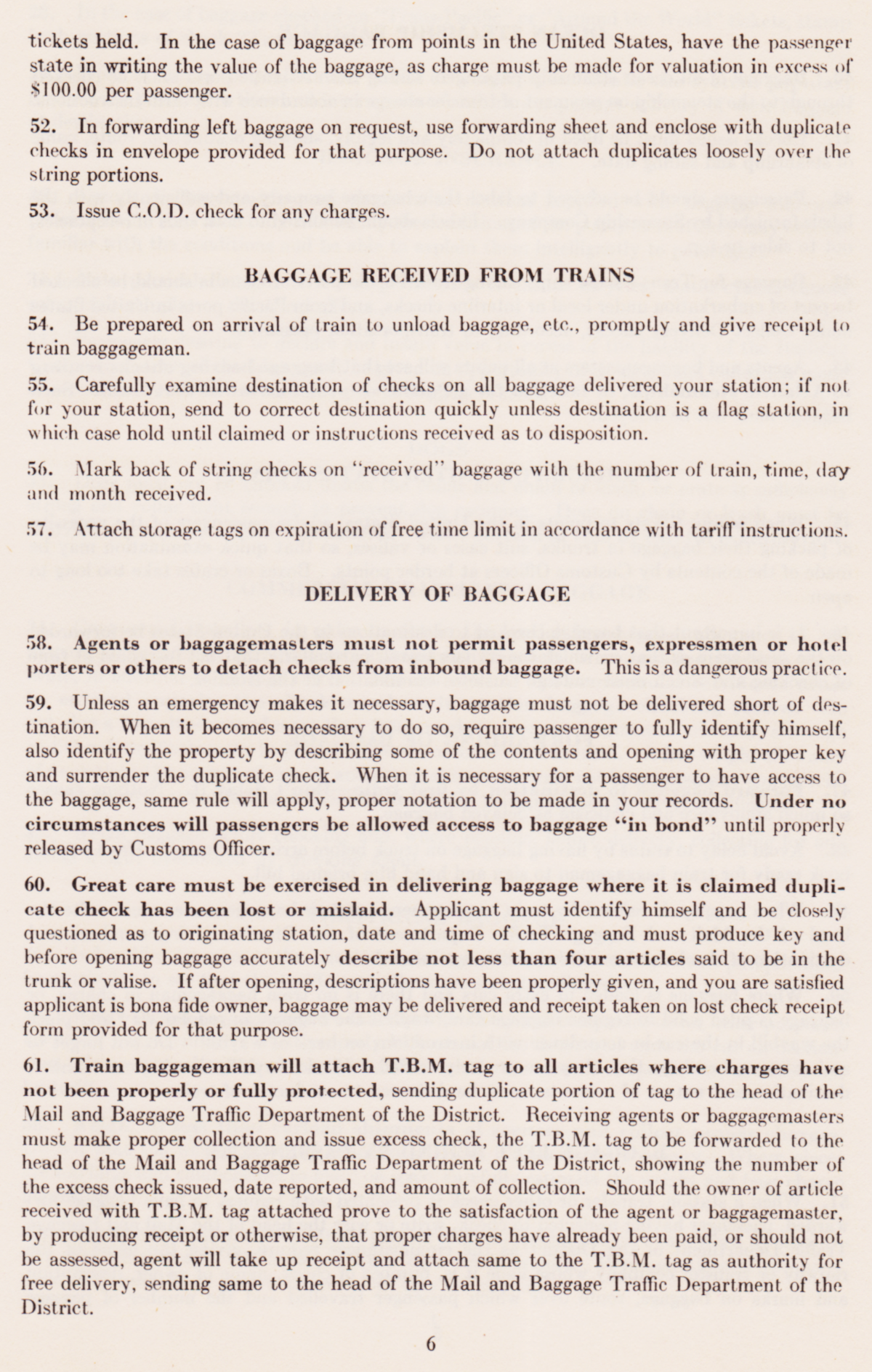People often travelled with trunks and suitcases made of wood, metal or leather in the 1900-1950 era. Most long-distance travel was done by rail and ship.
It was not yet necessary to lift every piece of baggage up to 30,000 feet. This was also in an age before consumer products - such as luggage - were commonly made of lightweight plastics and aluminum.
Building heating systems were not particularly sophisticated (and home insulation was non-existent), particularly if people were living in small settlements where dwellings were heated by coal or wood stoves. A large house might be heated by a central furnace whose heat came up through a single, very large grate ... which was located in the centre of the house ... at the bottom of the main staircase. People packed more clothes and they were made from natural fibres and materials.
... Back when everything which travelled was heavy, the railways were well set up to handle it. With local freight, express and baggage operations in almost every small town ... domiciled in the settlement's railway station ... your brutally heavy trunk or valise was just one more item to load onto, or unload from, a railway car. And the railways had a call on lots of cheap labour to do all this loading and unloading.
... Enter the agents, baggagemasters, baggagemen ... and porters and/or labourers at larger settlements. They had the handcarts, platform wagons, sleds and other devices ... and they knew how to use them! But there was still a lot of human brute force involved to move the baggage.
The engineer, fireman and conductor generally intrigue us the most. However, as you'll see by glancing over these procedures, the people handling baggage had to know their stuff and pay attention to detail - or they'd hear about it. Just the volume of material (the sheer number of pieces) which travelled through stations and via baggage cars is hard to imagine today.
These workers first had to have a lot of regional geographical knowledge. They also had to have some perspective of the Spans the World transportation empire and how something should get from Point A to Point P (changing trains at Point K) and then on by ocean to Point X. They were expected never to make mistakes when handling objects in bond as they crossed back and forth across international boundaries.
Above all, they were to protect the Company from being cheated out of its due by all manner of grifters, liars, thieves, fraudsters and outright professional criminals.
In the instructions:
... Paper forms and perforated cardboard tags on strings must all be completed and handled in the prescribed manner. Reports must submitted it a timely manner with all the supporting paperwork in the prescribed format. Paperwork must be passed on to your relief in good order.
Has a suitcase in the baggage car overshot its station? Does baggage need to be set off in the bush or at a closed station where no agent is on duty? Does a passenger need their digitalis which went into their steamer trunk in the baggage car, instead of their pocket? Are you transporting dogs? Wait, is that milk or cream being loaded? Were those returning empty milk cans transported to the dairy by truck? Is that a case of dynamite on the baggage wagon? Is there motion picture film stock in that box? What looks like a court order has been placed in your hand - what do you do?
Nowhere are safe lifting techniques mentioned or promoted.
Sadly, even as an act of catharsis, one is not allowed to drop that loathsome trunk, probably filled with lead (perhaps someone's professional library), from the baggage car door to the platform at its destination. Nope.
Here is yet another facet of the 'human experience' of railroading ...
 |
| CPR official photo, obtained circa 1943 by LC Gagnon. |
 |
| from: Quebec 1850-1950; Lionel Koffler; 2005; Firefly books. |
The CPR station at Gracefield, Quebec in 1914.















